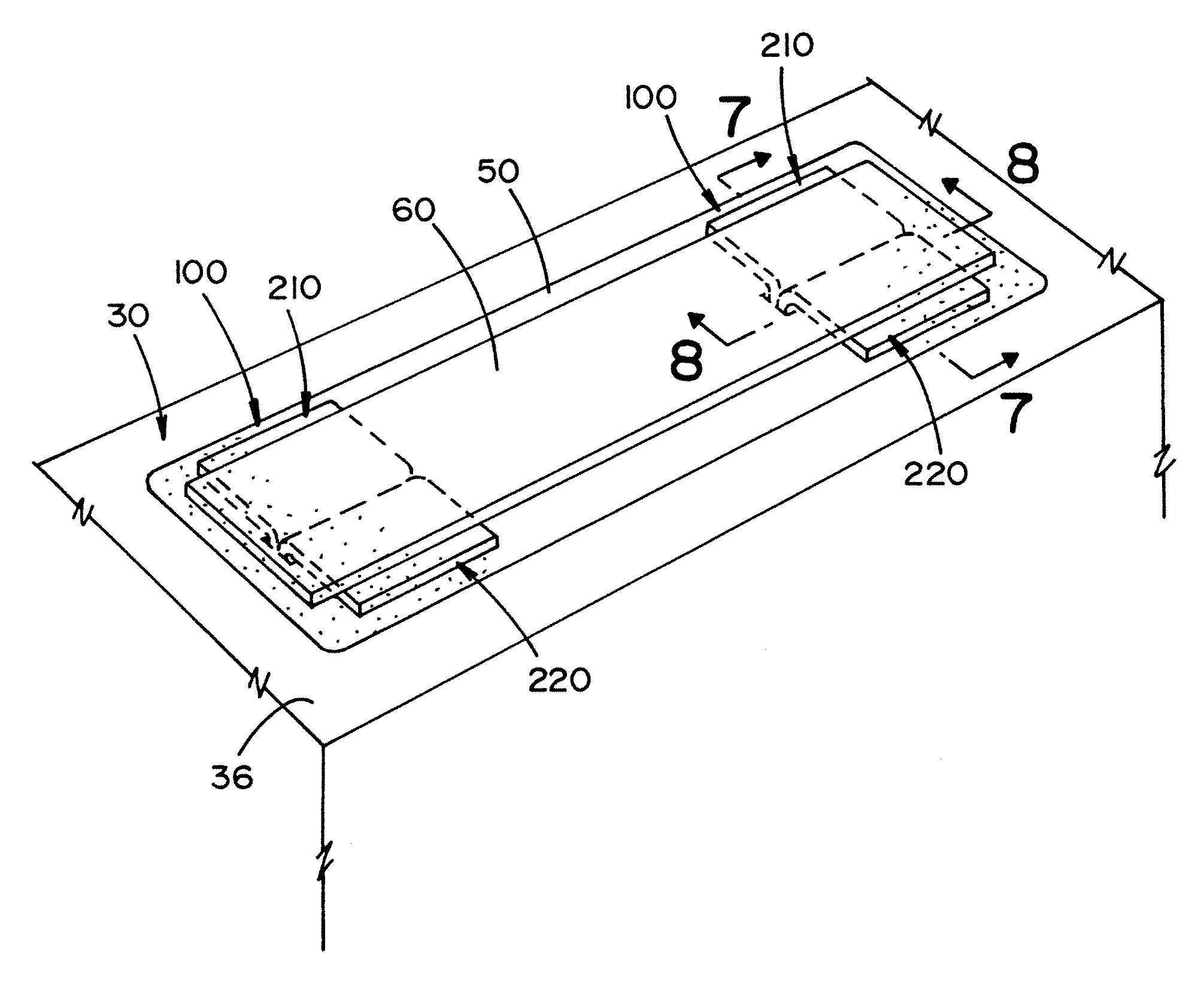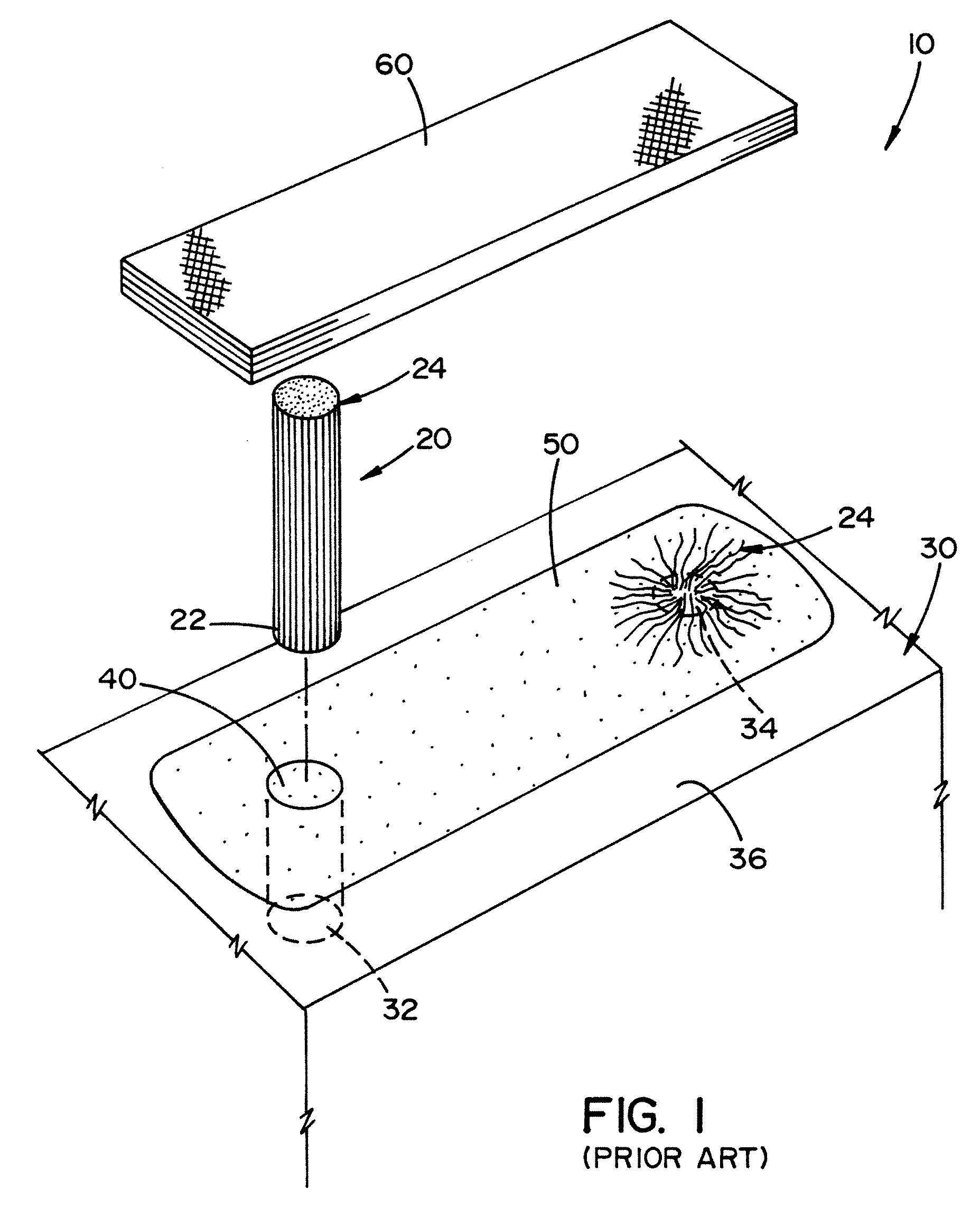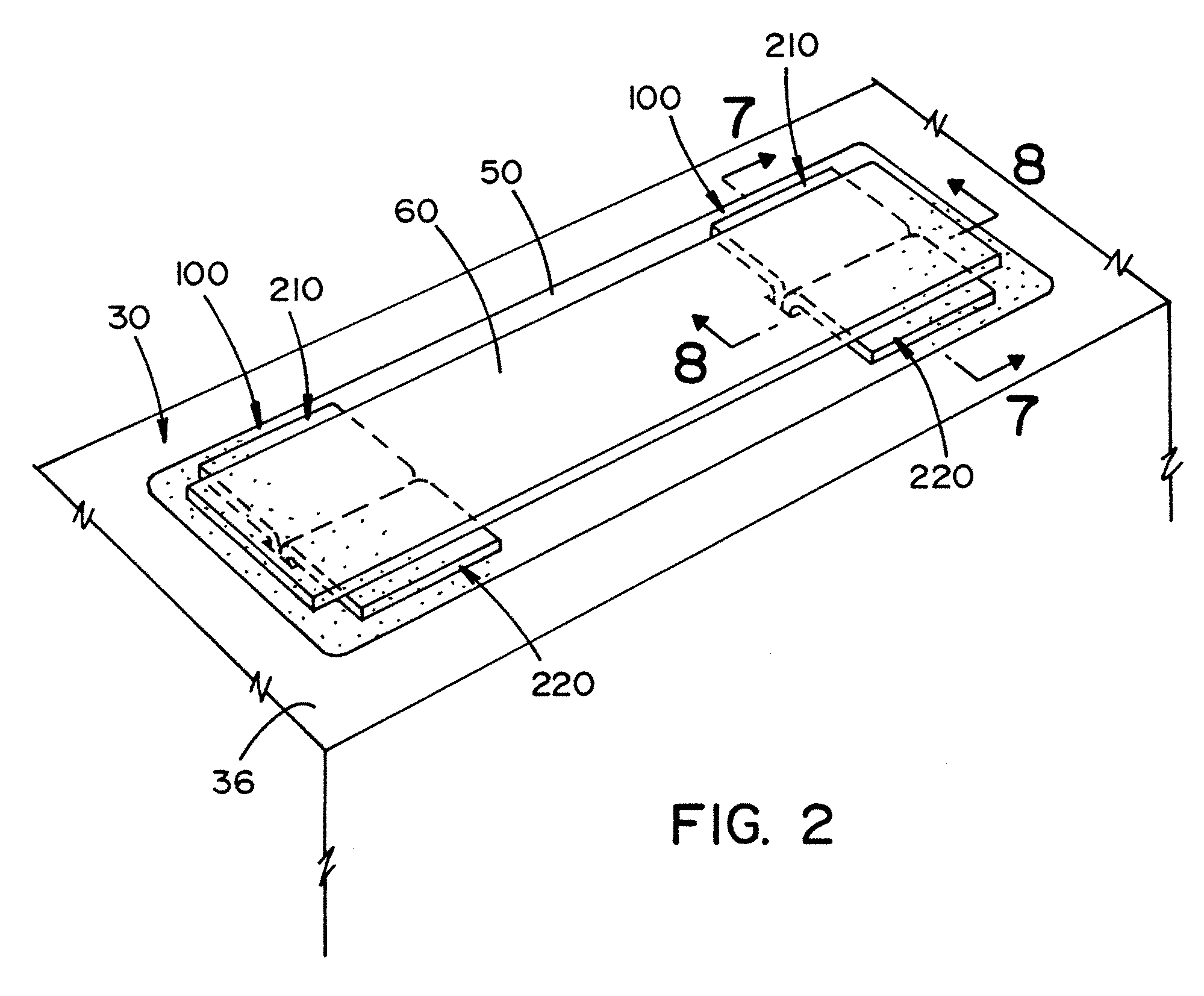Method and apparatus for repairing concrete
a concrete and method technology, applied in the field of concrete methods and equipment, can solve the problems of concrete damage, high time consumption and labor intensity of methods, and achieve the effects of less expensive, strong anchoring system, and simple implementation
- Summary
- Abstract
- Description
- Claims
- Application Information
AI Technical Summary
Benefits of technology
Problems solved by technology
Method used
Image
Examples
Embodiment Construction
[0046]Referring now to the drawings wherein the showings are for the purpose of illustrating preferred embodiments of the invention only and not for the purpose of limiting same, FIG. 1 illustrates a prior art concrete reinforcement system 10. FIG. 1 illustrates the use of a fiber reinforcement strip, such as a Carbon Fiber Reinforced Plastic (CFRP) sheet, to strengthen a concrete structure. One of the major problems associated with the reinforcing of concrete with fiber reinforced strips is the debonding of the reinforcement strip from the concrete structure before the reinforcement strip has achieved its maximum potential strength in reinforcing the concrete structure. To address this debonding problem, anchors have been used with the fiber reinforcement strip to prevent the debonding of the fiber reinforcement strips from the concrete structure. A common type of anchor that has been used is the Splay anchor. This type of anchor is illustrated in FIG. 1. These types of anchors are...
PUM
| Property | Measurement | Unit |
|---|---|---|
| width | aaaaa | aaaaa |
| width | aaaaa | aaaaa |
| width | aaaaa | aaaaa |
Abstract
Description
Claims
Application Information
 Login to View More
Login to View More - R&D
- Intellectual Property
- Life Sciences
- Materials
- Tech Scout
- Unparalleled Data Quality
- Higher Quality Content
- 60% Fewer Hallucinations
Browse by: Latest US Patents, China's latest patents, Technical Efficacy Thesaurus, Application Domain, Technology Topic, Popular Technical Reports.
© 2025 PatSnap. All rights reserved.Legal|Privacy policy|Modern Slavery Act Transparency Statement|Sitemap|About US| Contact US: help@patsnap.com



